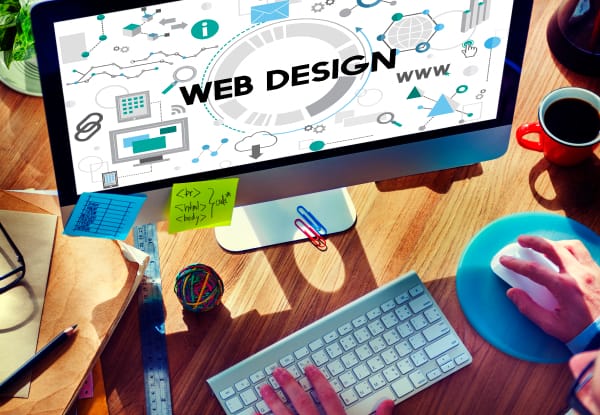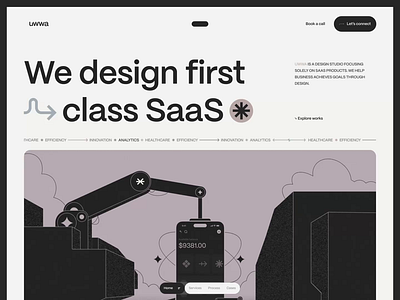Necessary Concepts of Web Site Design: Creating User-Friendly Experiences
In the world of site layout, the development of straightforward experiences is not merely a basic necessity but a visual pursuit. Crucial concepts such as user-centered style, user-friendly navigating, and accessibility work as the foundation of reliable electronic systems. By concentrating on user needs and preferences, designers can promote interaction and contentment, yet the implications of these principles expand beyond plain performance. Recognizing how they intertwine can dramatically affect a site's total effectiveness and success, prompting a better evaluation of their individual functions and collective influence on user experience.

Significance of User-Centered Style
Focusing on user-centered design is important for producing efficient websites that satisfy the requirements of their target audience. This method puts the customer at the leading edge of the design process, making certain that the web site not only functions well however likewise resonates with users on a personal level. By comprehending the individuals' goals, behaviors, and choices, designers can craft experiences that foster involvement and satisfaction.
Moreover, embracing a user-centered style viewpoint can cause improved access and inclusivity, dealing with a varied audience. By considering numerous individual demographics, such as age, technological efficiency, and cultural backgrounds, developers can develop websites that rate and practical for all.
Eventually, focusing on user-centered layout not only boosts individual experience yet can also drive essential company end results, such as enhanced conversion prices and consumer loyalty. In today's competitive digital landscape, understanding and focusing on user requirements is a critical success aspect.
Intuitive Navigation Frameworks
Reliable internet site navigating is usually an important element in improving customer experience. Intuitive navigating frameworks enable customers to find information rapidly and efficiently, lowering disappointment and raising interaction.
To create intuitive navigating, developers should prioritize clearness. Labels should be acquainted and descriptive to customers, avoiding jargon or ambiguous terms. A hierarchical framework, with main groups bring about subcategories, can even more aid users in comprehending the relationship between different sections of the website.
Additionally, including aesthetic hints such as breadcrumbs can direct users with their navigating course, enabling them to easily backtrack if required. The inclusion of a search bar additionally improves navigability, giving users route accessibility to web content without having to navigate via multiple layers.
Adaptive and receptive Formats
In today's digital landscape, making sure that websites function flawlessly throughout different devices is essential for user contentment - Website Design. Adaptive and responsive formats are 2 vital techniques that enable this capability, dealing with the varied series of screen dimensions and resolutions that individuals may run into
Responsive layouts use fluid grids and adaptable images, permitting the site to automatically readjust its aspects based on the display dimensions. This strategy gives a regular experience, where material reflows dynamically to fit the viewport, which is particularly beneficial for mobile users. By making use of CSS media queries, developers can develop breakpoints that maximize the format for different tools without the demand for separate styles.
Adaptive formats, on the other hand, use predefined designs for specific display dimensions. When a customer accesses the website, the web server finds the device site here and offers the appropriate design, guaranteeing an enhanced experience for varying resolutions. This can result in faster filling times and improved performance, as each format is tailored to the device's capabilities.
Both adaptive and receptive styles are crucial for boosting user engagement and contentment, inevitably contributing to the internet site's general efficiency in satisfying its goals.
Constant Visual Power Structure
Establishing a regular visual power structure is essential for directing individuals via an internet site's material. This principle guarantees that info is provided in a way that is both appealing and instinctive, enabling users to quickly comprehend the product and browse. A well-defined pecking order uses various layout aspects, such as dimension, shade, spacing, and contrast, to create a clear difference in between various kinds of web content.

Moreover, constant application of these aesthetic hints throughout the internet site cultivates familiarity and depend on. Individuals can promptly find out to acknowledge patterns, making their interactions a lot go to these guys more effective. Eventually, a solid aesthetic power structure not only enhances user experience however additionally enhances overall website usability, encouraging deeper interaction and promoting the wanted activities on a website.
Ease Of Access for All Users
Ease of access for all customers is a basic facet of internet site layout that ensures everyone, no matter their capacities or disabilities, can involve with and benefit from on the internet content. Creating with ease of access in mind includes implementing techniques that accommodate diverse customer demands, such as those with aesthetic, acoustic, electric motor, or cognitive problems.
One crucial guideline is to abide by the Web Material Access Guidelines (WCAG), which provide a structure for creating obtainable digital experiences. This consists of making use of enough shade comparison, supplying message options for images, and making certain that navigation is keyboard-friendly. In addition, using receptive style strategies makes certain that internet sites function efficiently across various tools and display dimensions, additionally enhancing availability.
One more essential variable is using clear, succinct language that prevents lingo, making content comprehensible for all individuals. Involving customers with assistive technologies, such as display read this post here readers, needs cautious attention to HTML semiotics and ARIA (Available Rich Internet Applications) roles.
Eventually, focusing on ease of access not only fulfills lawful commitments yet likewise expands the target market reach, cultivating inclusivity and boosting customer contentment. A commitment to accessibility reflects a dedication to producing equitable digital atmospheres for all individuals.
Final Thought
To conclude, the vital principles of site style-- user-centered design, user-friendly navigating, receptive layouts, consistent aesthetic hierarchy, and access-- jointly contribute to the production of easy to use experiences. Website Design. By focusing on individual requirements and ensuring that all people can effectively involve with the site, developers improve usability and foster inclusivity. These principles not just boost individual fulfillment however additionally drive positive company outcomes, inevitably demonstrating the crucial relevance of thoughtful internet site layout in today's digital landscape
These approaches give very useful understandings right into customer assumptions and pain points, allowing developers to tailor the web site's attributes and content accordingly.Reliable internet site navigating is frequently a vital variable in enhancing individual experience.Establishing a consistent aesthetic power structure is crucial for assisting customers through a website's web content. Ultimately, a strong aesthetic pecking order not only boosts individual experience yet also improves overall site usability, urging deeper engagement and promoting the desired actions on a site.
These concepts not just enhance individual satisfaction yet additionally drive favorable company outcomes, inevitably showing the essential value of thoughtful web site design in today's digital landscape.
Comments on “Website Design Essentials for a Superior Customer Journey”